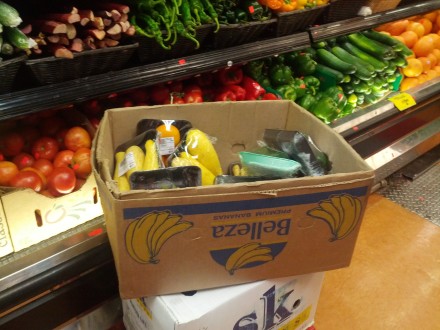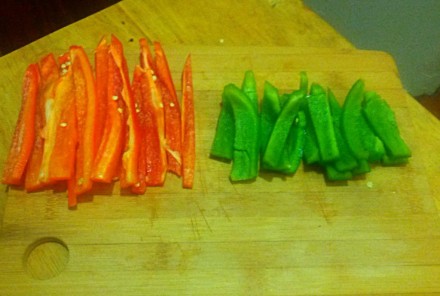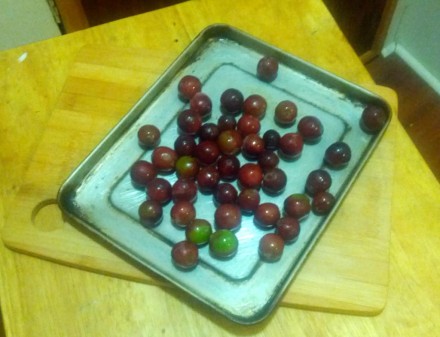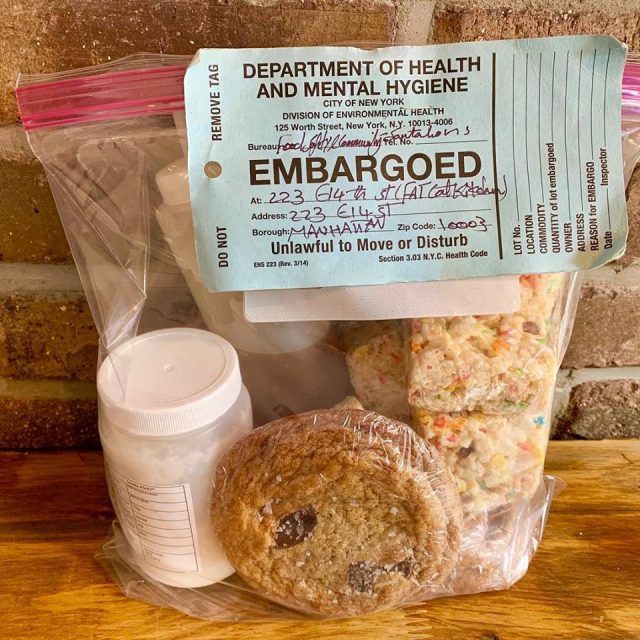
We’ve all been there. Walking past the produce aisle you decide to pick up some fruits and veggies so your fridge doesn’t look like you’re in the process of moving out. However, once you go over to the grapes and realize that you’re going to be spending at least $7 on these little delicious morsels, you start to debate your healthy decision. Honestly, who’s going to look in your fridge anyway? Your roommate won’t judge you.
But then you see a box with a bunch of produce tossed into it. Did someone just leave this lying here? Who takes a box to a grocery store? Upon closer inspection you see that some of the produce in there looks pretty damn good. And there’s even grapes here! You check the price and – holy crap they’re $1.50!
And this, my friends, is how you discover the discount produce bin at your local grocery store. It’s a magical moment, where your wallet meets fresh produce and they make amazingly healthy babies. Eating well doesn’t have to cost you a fortune; you just have to be smart about it.
The food in the discount bins is still safe for consumption, and is usually at a discount going down to anywhere from $0.50 to $3. Produce that’s in these bins are past their “use by” date, but you won’t need to pick through the moldy bits or get creeped out by slimy veggies – the most you’ll have to deal with is a bit of squishy parts on some of them. Think of when you buy peppers and they’ve got some wrinkles. They’re not optimal, bur they’re still good.
Most larger chain grocery stores (think PathMark, C-Town, Key Foods) will have these bins. Look for them near the front of the produce section, or off to the side in a box / on one of those carts with shelves. The key here is to be patient: sometimes there will be many days of just mushy bananas (good for smoothies and overnight oatmeal) and apples, but there are also days you’ll check the box and find parsnips, zucchini and peppers, and your heart will leap for joy.
But what do you do when you get these fruits and veggies home? There are a variety of ways to properly freeze this produce from the brokester gods – most involve blanching or pre-freezing.

With peppers, slice them into strips and toss them in a freezer bag. They’ll hold up incredibly well and you won’t have to hold off until a sale.

Grapes are easily frozen when laid out on a baking rack in the freezer, letting them get frozen individually before putting them in a bag and taking them out as needed (you can also do this with sliced strawberries).
Other vegetables, like eggplant and zucchini, can be frozen by blanching them first before tossing them into a bag. To do that, cut them up into bite sized pieces and toss them in salted boiling water for a few minutes. After they get nice and bright shock them in an ice water bath and let them air dry (or pat them try if you’re impatient).
Now that you’ve frozen your discount bin haul and your freezer looks like you don’t only subsist on ramen and beer, it’s time to figure out how to use them. Here are some ideas:
-For peppers, use them like you would any fresh pepper. If you were smart and bought chicken while it was $1.99/lb and froze that too, then you can make a quick dish of peppers, onions, and chicken tossed over rice. Your friend will be very impressed.
– Grapes are great frozen. Now that it’s near boiling point outside they make refreshing treats to pop in your mouth while you’re running out the door to your shift at the co-op.
– Parsnips are a really awesome root vegetable that people don’t use nearly as much as they should. Cut them into matchsticks, steam them a little bit, then toss in some sesame oil and low-sodium soy sauce and fry ‘em up! Add in some red pepper flakes and sesame seeds and you’ve got yourself a delicious little snack.
– Bananas are incredibly useful. If they’re starting to go bad, you can toss them in the freezer, peel and all, and they’ll be fine. The aforementioned overnight oatmeal is a godsend if you’re just too busy to eat breakfast. It’s easy: Take some Greek yogurt, a bit of almond milk and your bananas, and mash them together in the oatmeal. Add in some chia seeds (if you have some) and cinnamon and leave it overnight in the fridge. The milk will absorb into the oats and the bananas will mush into everything, making a delicious and healthy way to start the day before you go and grab your first of eight cups of coffee. This works for other fruits, too! Experiment!
Follow Amanda for more tweets about buildings and food at @newfoundfoodie
Leave a Reply



